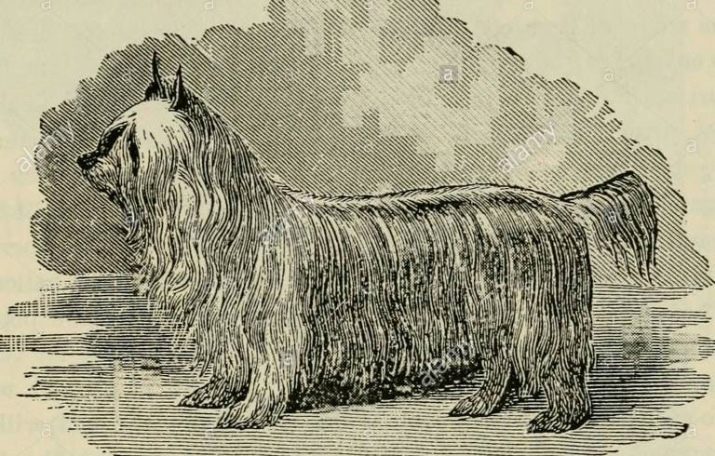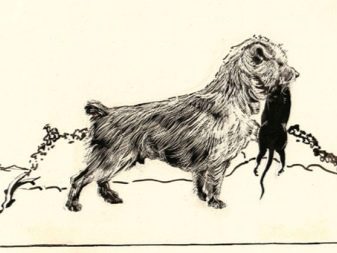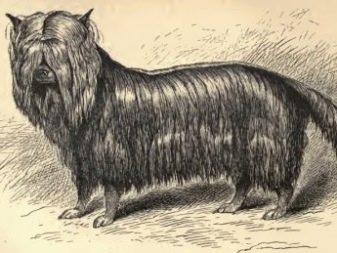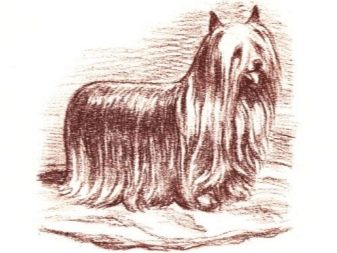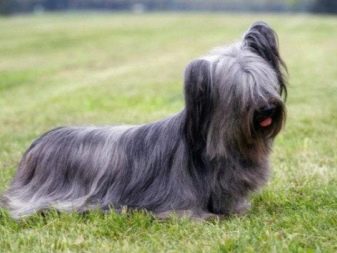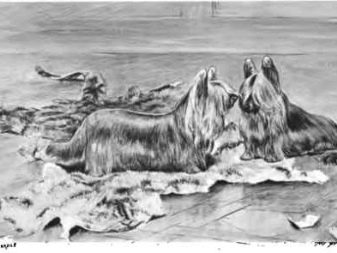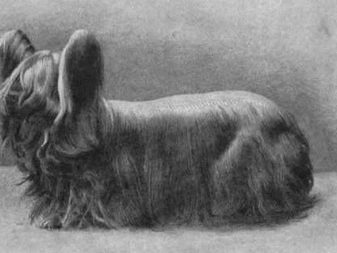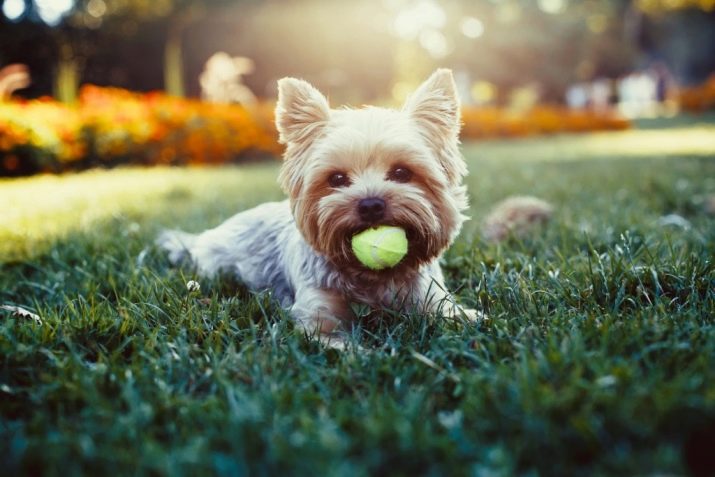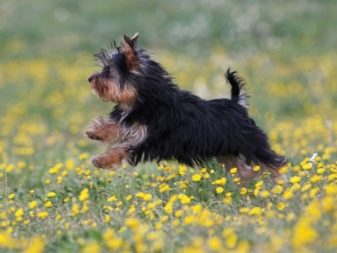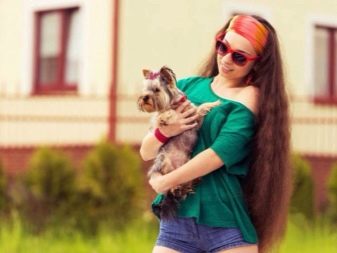The Yorkshire Terrier is perhaps the most common dog of all indoor and decorative breeds. These babies have the ability to conquer hearts with incredible speed. Touched appearance, soft fur and fervent, active disposition can not leave indifferent.
The history of the origin of the breed Yorkshire Terrier
The history of York is rooted in the past and is shrouded in countless speculation and assumptions, which are often very ambiguous. The formation of the breed took place over several centuries; its first ancestors are considered Old English Terriers, who were very different in appearance. There was a breed in northern England, more precisely, in Scotland, in the counties of Yorkshire and Lancashire in the XVIII – XIX centuries.
The patriarchs of the breed differed from modern dogs with more significant parameters, weighed about 5–7 kg. The gray-blue tide wool did not have a special length and density, the body was more elongated, and the ears were semi-erect.
At that time in England, hunting for commoners was prohibited, and in order to avoid cases of poaching a law was passed prohibiting the peasants from keeping large dogs. Moreover, for a medium-sized dog it was necessary to obtain a special permit from the local authorities. The aristocrats believed that with the small dogs the poor could not hunt. To determine the size of the dog was invented a special measure loop. Its diameter was about 17 cm, and if the animal could crawl into this loop, the peasant was allowed to keep it.
Partly because of this law in England there are a large number of small dog breeds. The progenitors of the current Yorkies guarded the houses and fields of the peasants from rodents, served as guides on trips. Dexterous and mobile small animals easily made their way into the narrow holes of mice and rats, catching them. Such abilities were evaluated, and for the sake of entertainment, the peasants organized various competitions, the essence of which was in the extermination of rodents for a certain time. Dogs, winning in such fights, very revered and guarded.
It was then that a small dog called the Waterside Terrier, weighing 3-6 kg with a height of 27 cm, with a longer woolen coat of gray color with a blue tint was noticed in the history of the breed. The fact confirming the real existence of these animals is considered a documented article in the newspaper about the Waterside Terrier Polly - the winner of just such contests, and its owner John Richardson.
One of the first breeders in York is considered to be a certain Mr. Spink, who brought a male Australian terrier from Australia. At that time, a male named Punch was the winner of 13 shows in his homeland. As a result of crossing Punch with Waterside Terrier females, Spink bred offspring, which was distinguished by its small size, soft woolen cover and beautiful color.
One of his offspring was Huddersfield Ben, who later became the “father” of the modern York breed. With the birth of the industrial revolution, peasants from adjacent and distant villages looking for work began to converge in Yorkshire district. Together with them appeared and their pets - small scotch terriers. These dogs in total had similar features, although they differed somewhat in appearance because they were from different localities. They were known by different names, depending on the habitat, although they were united by the well-known - Scotch Terrier.
In the history of Yorkshire terriers Maltese lapdogs are also being promoted as possible grandparents. In the old breeding records you can find information that to improve the quality of wool, its structure and the length of the representatives of York were paired with Maltese lapdogs. As a rationale for this fact, yorkies with light wool have the best characteristics of wool.
It is believed that Old England Terriers from Manchester also contributed to the formation. The article about the formation of the breed, published in 1892, described two animals: Scottish Terrier Old Crab and Kitty Sky Terrier.
Male possessed an elongated body, copper-bronze color of the muzzle and limbs. Kitty's ears were loose, and her coat was blue. Their descendants were used for the further development of the breed. In 1873, the Kennel Club was created, whose members registered pedigrees, described breeds. Clydesdale-and paisley-terriers can also be considered as potential relatives of current Yorkies, although they were not classified by the Club as independent breeds.
Their selection soon stopped, and now such species no longer exist. As a result of long work on the formation of the breed appeared terriers with a soft, smooth coat, besides having sufficient length. Color she had a bluish-blue with tan brownish-golden tones. In the breeding and development of the breed mainly involved workers and weavers. A new type of dog with a miniature size and a cute look lightningly gained recognition in various circles, displacing other types of terriers.
The year 1886 is significant by the fact that the Yorkies were officially accepted at the Kennel Club and entered in the tribal book. At the same time, they approved the breed standard for breeders and breeders. Connoisseurs of York created in 1898 the Yorkshire Terrier Club. In the chronology of York, a special place is reserved for a dog named Huddersfield Ben. He is called the ancestor of the breed.
Mistress of the animal Joan Foster from Yorkshire was a member of the jury of the Kennel Club and a famous breeder. For his short life, the legendary dog received 74 prizes at various exhibitions and became the father of numerous champions. He died at the age of seven under the wheels of a cab, giving life to a rather numerical offspring.
Ben was officially recognized by the Yorkshire sons of Huddersfield: Mozart, who won the exhibition in 1870, was named the first representative of the new breed, and Ted was considered the best instance of the Yorkshire for six years. He had the following characteristics: short back, weight 5 pounds, height 9 inches.
Character
Formation of the nature of Yorks lasted for several centuries, because each generation contributed to the mite. Despite the tiny size, dogs are brave and courageous. Such traits are inherent in the breed since its inception, since small hunters have always been brave. Only a dog with such abilities could rush into a narrow hole or tirelessly kill rodents, even if they came across the same size as the hunter himself. Yorkers are energetic and restless, they can run around the ball without a break or play active games with children.
However, York is characterized by restraint, surprising intelligence and loyalty to the owner. Due to its active nature, The Yorkshire Terrier needs long walks, active pastime and training.
If the dog gets bored, it can use its irrepressible energy at its own discretion: arrange a rout in the apartment or chew on something.
Yorks are very sensitive to the mood of the owner, and if to this feature add extraordinary mental abilities, the best manipulator is difficult to find. Therefore, consistency and perseverance are necessary in upbringing;
The representative of York came to our country only in 1972.The puppy was presented as a gift to the ballerina Olga Lepeshinskaya. He caused a stir in society, and since then rich people have brought miniature dogs from abroad for huge money. Only in 1992 in Mytishchi created a nursery, which brought tribal Yorkshire from different countries. Today there are a huge number of breeders of this unusual breed. Anyone can purchase this amazing miniature creature and get a true friend.
On the Yorkshire Terrier breed, see the video below.

